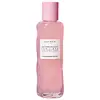What's inside
What's inside
 Key Ingredients
Key Ingredients

 Benefits
Benefits

 Concerns
Concerns

 Ingredients Side-by-side
Ingredients Side-by-side

Opuntia Ficus-Indica Extract
Skin ConditioningCitrullus Lanatus Fruit Extract
Skin ConditioningGlycerin
HumectantHyaluronic Acid
HumectantGluconolactone
Skin ConditioningSodium Polyglutamate
HumectantBetaine Salicylate
AntimicrobialSalix Alba Bark Extract
AstringentMelaleuca Alternifolia Leaf Extract
PerfumingHibiscus Sabdariffa Flower Extract
Skin ConditioningLactobacillus/Watermelon Fruit Ferment Extract
Skin ConditioningCucumis Sativus Fruit Extract
EmollientSaccharum Officinarum Extract
MoisturisingGlycyrrhiza Glabra Root Extract
BleachingScutellaria Baicalensis Root Extract
AstringentPaeonia Suffruticosa Root Extract
Skin ProtectingBrassica Oleracea Capitata Leaf Extract
Skin ConditioningIpomoea Batatas Root Extract
Skin ConditioningSorbitan Oleate
EmulsifyingLevulinic Acid
PerfumingSodium Levulinate
Skin ConditioningParfum
MaskingOpuntia Ficus-Indica Extract, Citrullus Lanatus Fruit Extract, Glycerin, Hyaluronic Acid, Gluconolactone, Sodium Polyglutamate, Betaine Salicylate, Salix Alba Bark Extract, Melaleuca Alternifolia Leaf Extract, Hibiscus Sabdariffa Flower Extract, Lactobacillus/Watermelon Fruit Ferment Extract, Cucumis Sativus Fruit Extract, Saccharum Officinarum Extract, Glycyrrhiza Glabra Root Extract, Scutellaria Baicalensis Root Extract, Paeonia Suffruticosa Root Extract, Brassica Oleracea Capitata Leaf Extract, Ipomoea Batatas Root Extract, Sorbitan Oleate, Levulinic Acid, Sodium Levulinate, Parfum
Water
Skin ConditioningButylene Glycol
HumectantHydrogenated Poly(C6-14 Olefin)
EmollientCyclopentasiloxane
EmollientGlycerin
HumectantCetyl Ethylhexanoate
EmollientCyclohexasiloxane
EmollientPolysorbate 60
EmulsifyingAlpinia Officinarum Root Extract
Skin ConditioningPhragmites Communis Extract
Skin ConditioningPoria Cocos Extract
Skin ConditioningGlycine
BufferingAlanine
MaskingArginine
MaskingSerine
MaskingGlutamic Acid
HumectantTocopherol
AntioxidantAdenosine
Skin ConditioningGlyceryl Stearate
EmollientGlyceryl Stearate Citrate
EmollientGlyceryl Caprylate
EmollientHydroxypropyl Bispalmitamide Mea
EmollientMyristic Acid
CleansingBehenic Acid
CleansingCetearyl Alcohol
EmollientHydrogenated Vegetable Oil
EmollientAcetyl Glucosamine
Skin ConditioningCholesterol
EmollientStearic Acid
CleansingStearyl Behenate
EmollientPalmitic Acid
EmollientArachidic Acid
CleansingHydrogenated Lecithin
EmulsifyingSodium PCA
HumectantSorbitan Stearate
EmulsifyingEthylhexylglycerin
Skin ConditioningSodium Hyaluronate Crosspolymer
HumectantPolyglyceryl-3 Methylglucose Distearate
EmulsifyingDimethicone
EmollientCarbomer
Emulsion StabilisingAmmonium Acryloyldimethyltaurate/Vp Copolymer
Tromethamine
BufferingPolysorbate 20
EmulsifyingPoloxamer 407
EmulsifyingPEG-100 Stearate
Methoxy PEG-114/Polyepsilon Caprolactone
BufferingDisodium EDTA
Phenoxyethanol
PreservativeParfum
MaskingWater, Butylene Glycol, Hydrogenated Poly(C6-14 Olefin), Cyclopentasiloxane, Glycerin, Cetyl Ethylhexanoate, Cyclohexasiloxane, Polysorbate 60, Alpinia Officinarum Root Extract, Phragmites Communis Extract, Poria Cocos Extract, Glycine, Alanine, Arginine, Serine, Glutamic Acid, Tocopherol, Adenosine, Glyceryl Stearate, Glyceryl Stearate Citrate, Glyceryl Caprylate, Hydroxypropyl Bispalmitamide Mea, Myristic Acid, Behenic Acid, Cetearyl Alcohol, Hydrogenated Vegetable Oil, Acetyl Glucosamine, Cholesterol, Stearic Acid, Stearyl Behenate, Palmitic Acid, Arachidic Acid, Hydrogenated Lecithin, Sodium PCA, Sorbitan Stearate, Ethylhexylglycerin, Sodium Hyaluronate Crosspolymer, Polyglyceryl-3 Methylglucose Distearate, Dimethicone, Carbomer, Ammonium Acryloyldimethyltaurate/Vp Copolymer, Tromethamine, Polysorbate 20, Poloxamer 407, PEG-100 Stearate, Methoxy PEG-114/Polyepsilon Caprolactone, Disodium EDTA, Phenoxyethanol, Parfum
 Reviews
Reviews

Ingredients Explained
These ingredients are found in both products.
Ingredients higher up in an ingredient list are typically present in a larger amount.
Glycerin is already naturally found in your skin. It helps moisturize and protect your skin.
A study from 2016 found glycerin to be more effective as a humectant than AHAs and hyaluronic acid.
As a humectant, it helps the skin stay hydrated by pulling moisture to your skin. The low molecular weight of glycerin allows it to pull moisture into the deeper layers of your skin.
Hydrated skin improves your skin barrier; Your skin barrier helps protect against irritants and bacteria.
Glycerin has also been found to have antimicrobial and antiviral properties. Due to these properties, glycerin is often used in wound and burn treatments.
In cosmetics, glycerin is usually derived from plants such as soybean or palm. However, it can also be sourced from animals, such as tallow or animal fat.
This ingredient is organic, colorless, odorless, and non-toxic.
Glycerin is the name for this ingredient in American English. British English uses Glycerol/Glycerine.
Learn more about GlycerinParfum is a catch-all term for an ingredient or more that is used to give a scent to products.
Also called "fragrance", this ingredient can be a blend of hundreds of chemicals or plant oils. This means every product with "fragrance" or "parfum" in the ingredients list is a different mixture.
For instance, Habanolide is a proprietary trade name for a specific aroma chemical. When used as a fragrance ingredient in cosmetics, most aroma chemicals fall under the broad labeling category of “FRAGRANCE” or “PARFUM” according to EU and US regulations.
The term 'parfum' or 'fragrance' is not regulated in many countries. In many cases, it is up to the brand to define this term.
For instance, many brands choose to label themselves as "fragrance-free" because they are not using synthetic fragrances. However, their products may still contain ingredients such as essential oils that are considered a fragrance by INCI standards.
One example is Calendula flower extract. Calendula is an essential oil that still imparts a scent or 'fragrance'.
Depending on the blend, the ingredients in the mixture can cause allergies and sensitivities on the skin. Some ingredients that are known EU allergens include linalool and citronellol.
Parfum can also be used to mask or cover an unpleasant scent.
The bottom line is: not all fragrances/parfum/ingredients are created equally. If you are worried about fragrances, we recommend taking a closer look at an ingredient. And of course, we always recommend speaking with a professional.
Learn more about Parfum